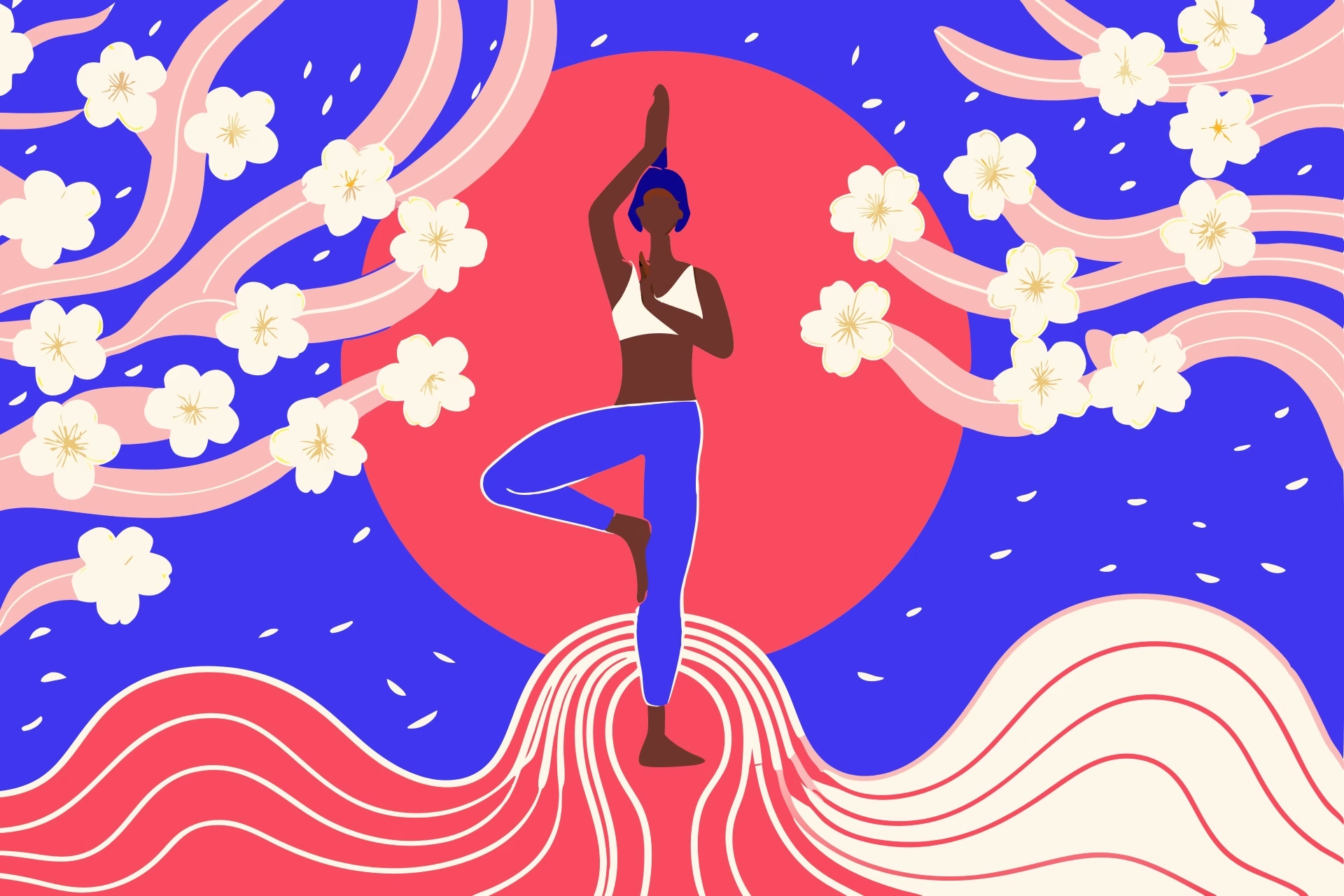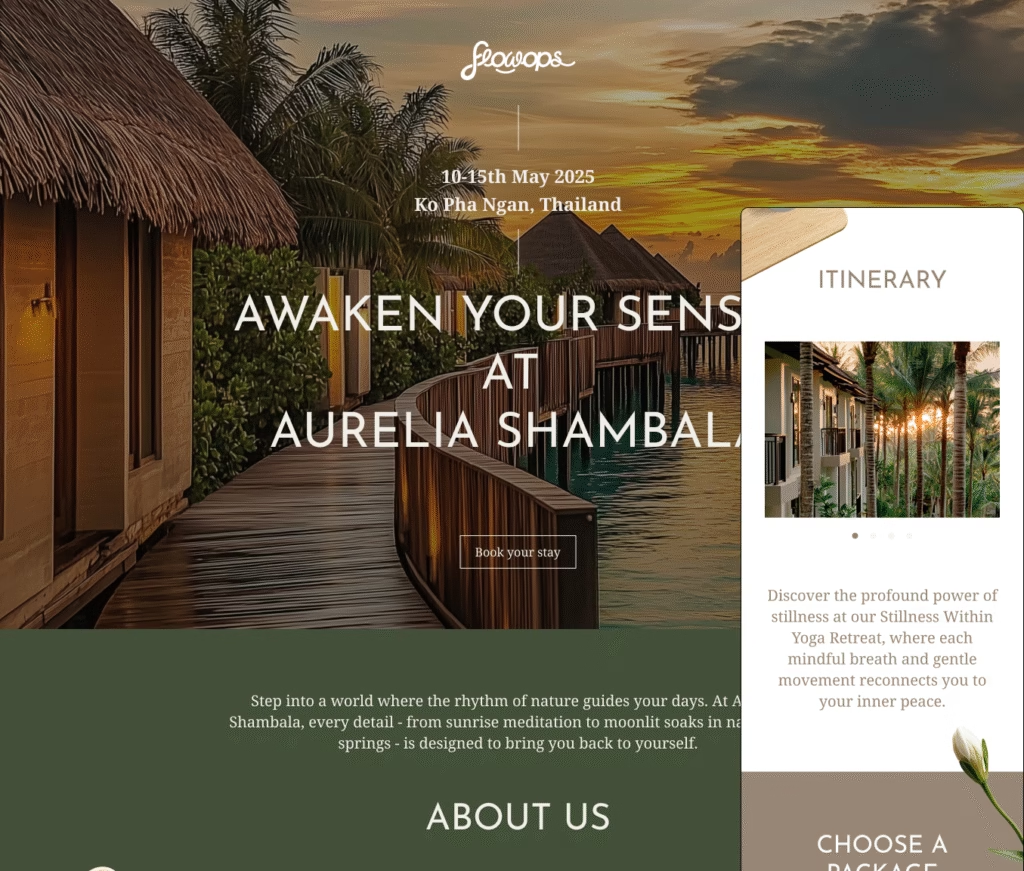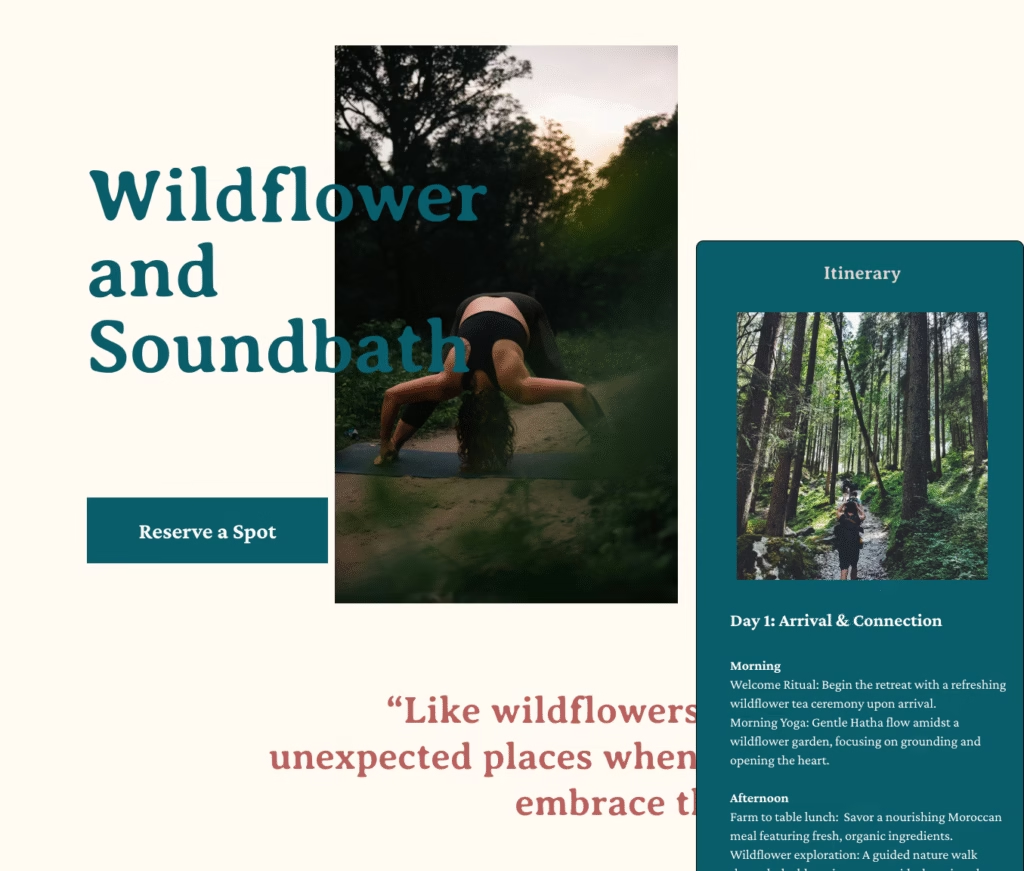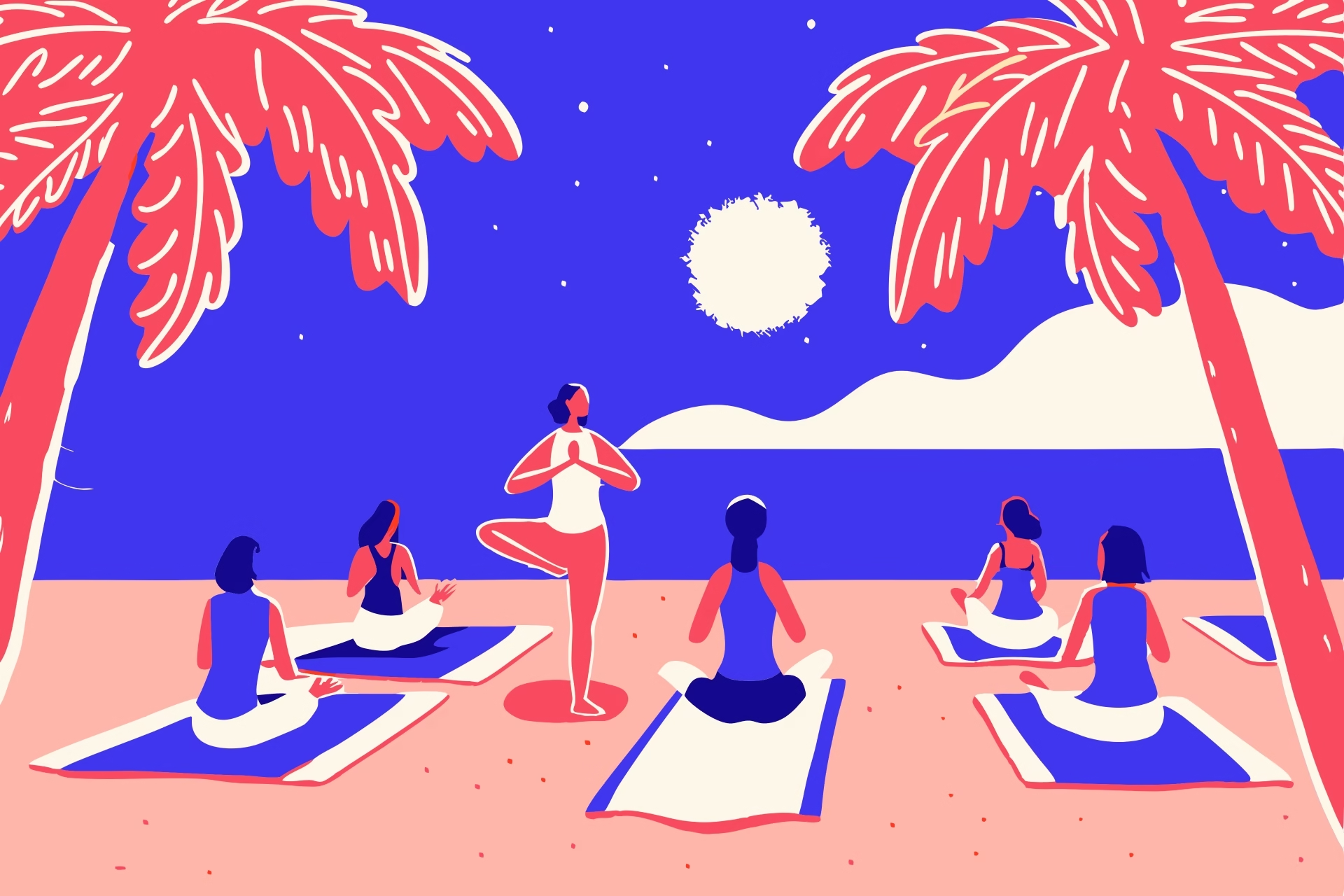Have you ever stood in front of your mat before class and thought… “Wait, what am I teaching today?”
That tiny moment of panic is more common than you think — especially for beginner and intermediate yoga teachers. Sequencing isn’t just about stringing together poses. It’s about creating a yoga flow sequence that feels cohesive, safe, and inspiring — while balancing different student needs, class levels, and your own teaching style.
If you’re still in the process of becoming a certified teacher, you might want to read how to become a certified yoga teacher — it covers training paths, costs, and what to expect before stepping into your first class.
The good news? There’s a method to it, and you don’t have to reinvent the wheel every time. In this guide, you’ll learn a step-by-step system for building yoga sequences for group and private classes, plus how TheFlowOps can take care of the admin side so you can focus on teaching.
Here’s our step-by-step guide to getting confident with your yoga flow sequences.
Step 1: Know Your Students Before You Plan
Before you think about peak poses or playlists, think about the people who will actually be in the room. Will your students be beginners, intermediate-level, advanced practitioners, seniors, or perhaps a mix? A sequence that works for a fit 25-year-old might be overwhelming for a 60-year-old with joint stiffness.
Group classes: Plan for a “middle ground” with clear options to scale up or down. For example, if you’re heading toward Wheel Pose, be ready to offer Bridge Pose for less experienced students.
Private sessions: You can go deep into customization — focus on individual goals, injuries, and preferred pacing. TheFlowOps booking system makes this easier by letting you collect student details during registration, so you’re not guessing when they arrive.
Understanding your students’ goals also impacts your income streams. For example, offering both group and private sessions can increase your earnings — here’s how much yoga teachers make and the different ways they earn.
As Yoga Journal notes, most sequences should flow from less challenging to more challenging, then taper back down. That’s true whether you’re teaching one person or twenty.
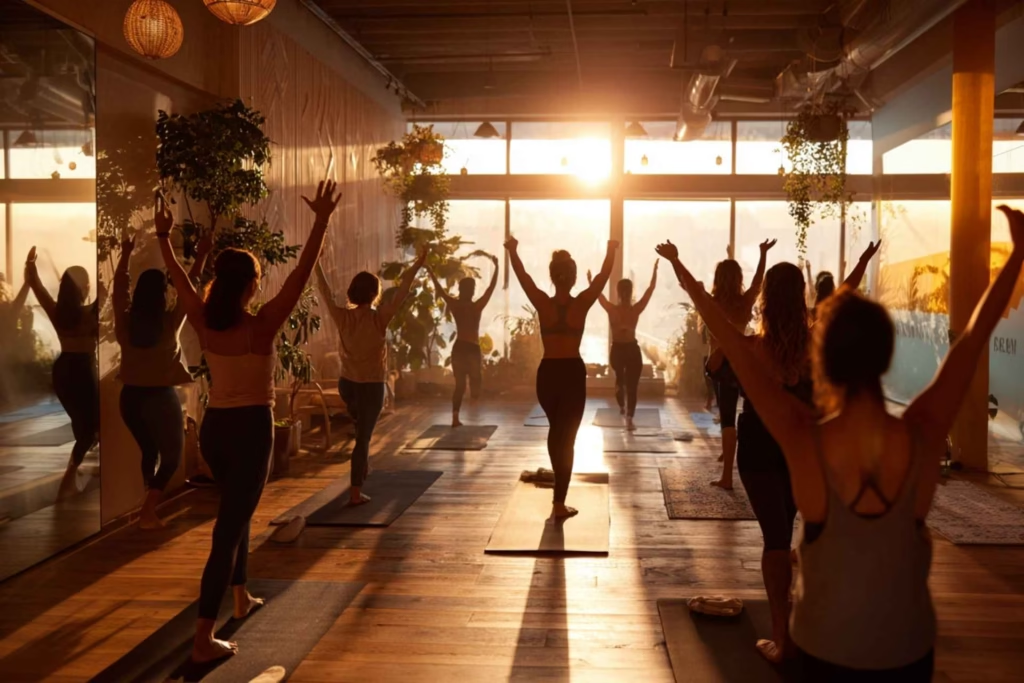
Want to make this part even easier? Use TheFlowOps’ online booking form to ask about student level, injuries, or goals in advance — it’s built right into the sign-up process.
Step 2: Set a Clear Intention for Your Class
Once you know your audience, decide what the class is about. Ask yourself: What do I want my students to feel, experience, or take away?
Your intention might be physical (hip opening, core strength) or energetic (grounding, energizing, calming). According to the Sri Sri School of Yoga, a clear intention acts as a guide for which poses to include and how to sequence them.
If you’ve just finished training, you might feel pressured to please everyone. Here’s the truth — you can’t. As one Forbes yoga instructor insight put it, you need to stay true to your teaching style and let your ideal students find you.
Step 3: Build Your Sequence Like a Journey
Think of your yoga flow sequence like telling a story — it needs a beginning, middle, and end.
Build your class flows pose by pose.
The Yoga Deck is your go-to pose bank—designed to help you plan sequences faster, with clarity and confidence.
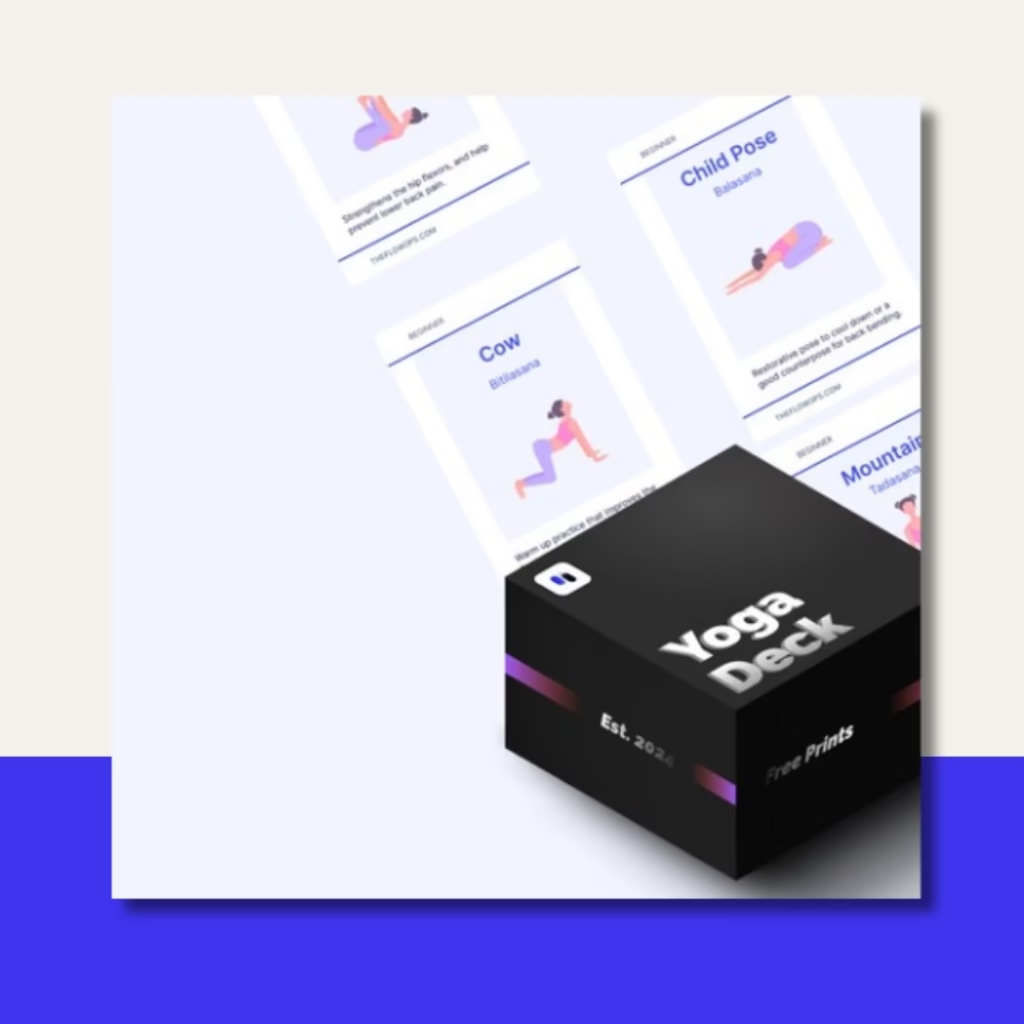
1. Centering & Warm-Up
Start with a few minutes of centering — maybe seated breathwork or a short meditation. Then add gentle warm-ups like Cat-Cow, shoulder rolls, or Sun Salutation A. According to My Vinyasa Practice, this phase prepares the body and mind for the more challenging work ahead.
2. Standing Flow / Peak Work
This is your main chapter — string together standing poses, balances, and flowing transitions that lead toward a peak pose if you have one. For example: Warrior I → Warrior II → Extended Side Angle → Half Moon.
One of my early group classes worked up to Crow Pose — but halfway through I realized only two people could safely attempt it. Lesson learned: always have an accessible alternative ready.
3. Floor Work & Cool Down
Bring students back to the mat with seated or supine stretches, twists, or hip openers. This phase balances the body after the standing work. As Purple Lotus Yoga explains, counterposes are key here — if you’ve done backbends, follow with forward folds.
4. Savasana
End with at least five minutes of stillness. It’s tempting to cut it short, but Yoga Journal reminds us that this final relaxation is where the practice integrates.
Finally, think about timing. Each phase of your class needs enough space to breathe — rushing a warm-up or cutting Savasana short can throw off the whole experience. A rough guide for a 60-minute class could be:
- 5 minutes centering
- 10 minutes warm-up
- 25 minutes standing/peak work
- 15 minutes floor poses and cool down
- 5 minutes Savasana
Time management tools can be a lifesaver here. See our Top 5 tools to manage your yoga classes to help keep classes running smoothly and on schedule.
Get organized and start planning your next wellness retreat with clarity and confidence using our free Retreat Planning Template.

Step 4: Add Creativity and Personal Flair
Themes make classes memorable. According to Arbox, designing around a theme — like “Opening the Heart” or “Strength Through Stillness” gives students something to connect with beyond the physical poses.
You can also:
- Tie in a reading or quote during centering.
- Use music that matches your class arc.
- Offer progressions over several weeks so students feel improvement.
This is where you make the class yours. One of my private clients once told me she loved that every Tuesday had a “mini focus” — even if it was just a 10-minute section for core strength. That kind of detail keeps students coming back.
Step 5: Deliver with Confidence and Adaptability
Even the best plan needs flexibility. Teach the students in front of you, not just the plan in your notebook. If your “energetic” class arrives looking exhausted, tone it down.
And remember—adjusting your class doesn’t make you less prepared or less qualified. It’s actually a reflection of your awareness and ability to hold space. If you’ve ever second-guessed your choices or felt unsure about whether you’re “ready” to lead, you’re not the only one.
This guide on conquering imposter syndrome as a yoga teacher offers reflections and tools to help you teach from a place of confidence and clarity.
That said, practicing your sequence beforehand helps you feel grounded. According to My Vinyasa Practice, rehearsal also highlights clunky transitions so you can smooth them out.
You can store your go-to sequences and class notes directly in your TheFlowOps dashboard — making it easy to pull up or tweak on the fly before class.
Staying adaptable isn’t just about teaching, it’s also about running your business efficiently. If admin work is holding you back, check out 5 ways yoga instructors can save time on admin.
Step 6: Use TheFlowOps to Handle the Admin
If you’ve ever compared tools, you’ll see why TheFlowOps is the best website builder for yoga teachers — it’s designed for the specific needs of instructors, unlike generic site builders.
Here’s where the business side meets the teaching side. TheFlowOps isn’t just a website builder — it’s an all-in-one yoga business platform designed specifically for wellness professionals. That means you get gorgeous, pre-built yoga-specific templates plus the tools to run your business in one place.
Build Your Website in Minutes — Choose Your Perfect Template:
Resort & Shala
Ideal if you run retreats, shala programs, or boutique wellness experiences. This template features:
- Seamless long-scroll homepage for immersive storytelling.
- Soft typography and calming colors to set a tranquil tone.
- Built-in service pages for organizing retreat schedules, workshops, or healing sessions.
- Flexible pricing tables for multiple retreat packages.
- Stripe and bank transfer checkout so guests can book instantly online.
Glamping Getaway
Perfect for nature-inspired retreats or adventure-wellness experiences. Features include:
- Full-screen imagery to showcase stunning outdoor locations.
- Clean, intuitive navigation so visitors can find exactly what they need.
- Integrated booking system for cabin stays, weekend workshops, or outdoor yoga series.
- Automated booking confirmations and guest management.
- Payment processing for deposits or full packages — all in one place.
Wildflower & Sound Bath
Designed for sound healers, reiki practitioners, and sensory-based classes. Features include:
- Soft, wave-like transitions and calming color palettes.
- Session-based booking (great for one-off events or recurring sound baths).
- Membership options for ongoing clients.
- Automated reminders so no one forgets their booked session.
- Fully responsive design — your site looks as beautiful on a phone as it does on desktop.
And if you want to see just how quick it is to get started, here’s how to build your yoga website in under 30 minutes.
Offer Integrated Booking & Checkout:
With TheFlowOps, your students can book group classes, private sessions, workshops, or retreats directly on your site — and pay on the spot. Sell single sessions, multi-class passes, or memberships without juggling separate payment platforms.
Automate Reminders & Follow-Ups:
Say goodbye to last-minute “Are you coming?” texts. TheFlowOps automatically sends reminders before class and follow-up messages after. That means fewer no-shows and more repeat bookings — without you lifting a finger.
You became a yoga teacher to share yoga, not to drown in admin. With TheFlowOps, you can focus on your sequences, your students, and your growth — while we handle the tech and logistics.
Ready to Create Your Yoga Website?
Choose from templates made for yoga teachers and launch with tools for scheduling, bookings, and more. Start with a premium trial — and continue on the free plan for as long as you need.
No credit card needed. Cancel anytime.

Conclusion: From “What Do I Teach?” to “I’ve Got This”
Remember that question at the start — What am I teaching today? By now, you’ve got a framework to answer it every single time. You know how to read your students, set a clear intention, build a well-paced yoga flow sequence, infuse creativity, and deliver with confidence.
And with TheFlowOps managing your bookings, payments, and scheduling, you can focus on what matters most — guiding your students through sequences that inspire, challenge, and restore them.
So the next time you step onto your mat as a yoga teacher, you won’t freeze. You’ll smile, take a breath, and think, I’ve got this.
👉 Ready to make class planning and admin stress-free? Sign up for TheFlowOps today, it’s free to start.

